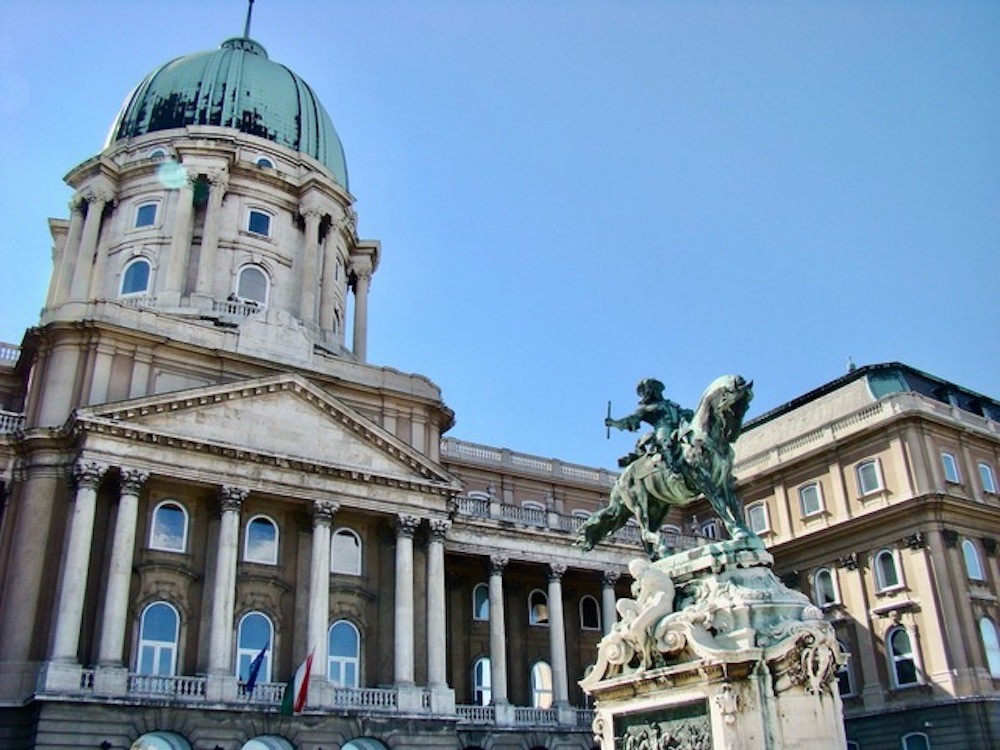Budapest, including the Banks of the Danube, the Buda Castle Quarter and Andrássy Avenue
By Angela Price
What is Budapest?
Budapest is the capital city of Hungary, and a historical city going back to pre-Roman times. As the Roman city of Aquincum it was important in spreading Roman architectural styles. In the Middle Ages, ideas about Gothic art and architecture disseminated from the Buda Castle quarter. After Buda and Pest united in the 19th century, Budapest became a progressive urban center, and produced many outstanding and eclectic works of architecture.
Disclosure: This article contains affiliate links. Making a purchase through an affiliate link will mean a small commission for this website. This will not affect your price. Privacy policy.

Why is Budapest a UNESCO World Heritage site?
Budapest, the Hungarian capital, according to UNESCO, is “one of the world’s outstanding urban landscapes and illustrates the great periods in the history of the Hungarian capital.” It has retained its cultural identity through its landscape, historical buildings and modern landmarks.
Buda Castle and the Buda Castle Quarter illustrate two distinct periods of the city’s history. Andrássy Avenue, added to the site listing in 2002, “radically transformed the urban structure of Pest, together with the construction of the European continent’s first underground railway beneath it in 1893-6.”

What can you expect on a visit to Budapest?
Budapest is a place to explore on foot to discover its rich heritage. There are so many Hungarian landmarks to see and many of them are listed as part of the UNESCO World Heritage site due to the value they bring in telling the story of one of Europe’s great cities.
Of particular interest are the Banks of the Danube, Buda Castle and Andrassy Avenue.
Banks of the Danube
Views from the Danube lead the eye along the Budapest hillside taking in both the Pest and Buda sides of the city. With the Danube as a main thoroughfare linking Budapest to other nearby cities it is an important feature of the city. The two sides are linked by bridges along its length.
Along the banks of the Danube in Pest can be found the poignant memorial to the Jewish lives lost during WW2. Called “Shoes on the Danube” it features pairs of bronze shoes from children and adults who were shot and fell into the river. It is one of Budapest’s most visited landmarks.

Buda Castle
Across the Danube, Buda Castle stands in a commanding position on the hills above the town. Consisting of preserved castle buildings, the 700-year-old St Matthias Church, Fisherman’s Bastion and the Hospital in the Rock, the Buda Castle complex is as distinct in its medieval and gothic appearance as its neighbour Pest, whose buildings are a mix of post-communism and Art Nouveau.
Andrássy Avenue
Andrássy Avenue is a long road lined with elaborate Art Nouveau buildings including the Opera House, as well as stores housing luxury brands. Andrássy Avenue leads from the hub of Pest to Heroes Square, Budapest’s most significant and symbolic square, built in 1896 to mark the 1000th anniversary of Hungarian rule. The statues around its base commemorate the leaders of the seven tribes of the Hungarians. Both these locations are listed by UNESCO for their prominent 19th-century architecture.
Is Budapest worth visiting?
Budapest remains one of Eastern Europe’s most visited cities and is a gem for culture and history lovers. A few days of sightseeing in the city will give you enough time to see all of Budapest’s main attractions including the UNESCO sites mentioned as well as the thermal baths, ruin bars, museums and river cruises.

Tips for visiting Budapest
When you arrive, make some time to wander around the area you are staying in, be it Pest or Buda. The city is a walking city and there are lots of hidden gems to discover.
Book a free walking tour to see Budapest through the eyes of a local.
As you plan your travels, consider visiting the other UNESCO sites in Hungary.
Use the map below to find accommodations in Budapest:
Where is Budapest?
Budapest is in Hungary and accessible by plane, road or water. It is about two hours’ drive from Bratislava, Slovakia, or three hours by train. From Vienna in Austria is it about 2.5 hours’ drive or 2.5-3 hours by train.
For more information about Budapest, see the official Visit Budapest website.
Have you been to Budapest? If so, do you have any additional information or advice about this UNESCO World Heritage site? Please add your comments below!

